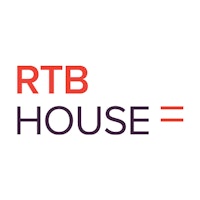RTB House
RTB House is a global company that provides state-of-the-art marketing technologies for top brands worldwide.
This promoted content is produced by a publishing partner of Open Mic. A paid-for membership product for partners of The Drum to self-publish their news, opinions and insights on thedrum.com - Find out more
How to improve your video marketing strategy with contextual targeting
July 22, 2022

Video is one of the most powerful marketing tools in today’s digital world. Whilst it can be used to convey a message in an engaging way and reach a large audience quickly, it can also be challenging to target the right audience with it. It’s not as simple as putting videos online and hoping for the best; to maximize impact video marketing needs to be strategic. And that’s where contextual targeting comes in.
Utilizing video’s potential to target specific audience members with contextual targeting can help brands drive attention, which, in turn, can improve brand awareness and recall. By understanding the different ways video can be used to reach target audiences, brands can create videos that look great and also deliver on messaging.
Advertisement
What are the benefits of video advertising?
It’s no secret that video content is one of the most shared types of online content, and according to a report by InVideo that trend is set to continue for the foreseeable future.
Did you know that 95% of viewers retain a message after watching a video compared to just 10% for text messages? This is because the brain loves visuals and can process visual information 60,000 times faster than text.
And because a video carries more information than text, the overall effect of the dynamic content is a deeper emotional connection. Video can help build a relationship with the user and connect with their emotions as it engages their visual and auditory senses, and if someone connects with the content they are likely to recall the information easier. For video advertising, 30 seconds is a long time, and many brands experiment with short ad forms, anything from 6-15 seconds. This means it’s imperative to convey the main points of the video within the first few seconds to maximize the effect.
Video advertising is indeed one of the best investments a brand can make, especially as brands who use video grow revenue 49% faster than those who don’t.
But how can brands create an engaging, shareable video?
One key factor to consider is the video’s sequence. By carefully sequencing scenes and shots, brands can create a narrative that builds suspense and draws in the audience. This will help them feel engaged and encourage them to keep watching until the end.
How can contextual targeting improve your video advertising strategy?
Contextual targeting is currently one of the hottest trends in video advertising because it can be used to deliver messages that are relevant to the user’s current context and situation, meaning the ads are more effective.
Other benefits of video targeting include:
- Increasing brand suitability
While some content is simply unsafe, contextual targeting allows advertisers to go beyond standard metrics and ensure ads are matching the overall context users are in. This is a great way to minimize ad fatigue and maximize chances for positive user reaction. - Effective targeting
The simplest targeting techniques are based on user behavior. In-video contextual targeting enables a different advertising model that helps advertisers to reach an audience that is most interested in the products or services they are offering in real-time. The combination of relevant content and guaranteed user interest helps advertisers increase ad recall by up to 73% according to an Integral Ad Science (IAS) study on ad context and attention. - Improving customer experience
Because contextual targeting places ads on a website that are related to its content, it allows advertisers to target videos based on locations, and interests. This enriches the user experience and increases brand favorability by up to 5% and purchase intent by 14%, according to the same IAS study. - Respecting user privacy
Combining video ads with the power of contextual targeting helps advertisers and consumers without violating privacy. Advertisers can present videos to the right audience without the need for any personal information about the user because contextual targeting analyses the website’s content, not user behavior.
How to measure the effectiveness of video ads
While contextual targeting can ensure brands are presenting their content to the right audience, how can they effectively monitor their video campaign’s performance?
Cost per completed view (CPCV) is a useful metric that can help brands and advertisers optimize their marketing budgets and learn whether users are interested in the video content but it’s attention metrics that, while a relatively new approach in digital advertising, have already shown their value to brand owners. Unlike traditional marketing metrics, which focus on reach and completion rates, attention metrics allow marketers to measure the true value of their audience and ad effectiveness in capturing user attention.
While this model combines factors like attention, skippability, duration, and device, advertisers can also isolate the effect of each factor to improve their ad campaigns, e.g. creative influence on the attention the campaign gathered.
This helps them identify areas and stories that appeal to a large audience and increase their bottom line. For advertisers, attention metrics also allow them to target more effectively. And since attribution data can be delayed, they can help make more informed decisions quickly.
Additionally, by analyzing video analytics, brands and advertisers can improve the video’s content. For example:
- If users are leaving a video before the end, brands can look at shortening the video or changing the segment that caused the users to exit
- If a brand wants to reach more people, it can try testing shorter video lengths
- If a brand wants to tell longer stories, it’s best to present them in a sequence of videos which helps identify and reach more engaged users
Conclusion
Video marketing allows brands to create more engaging and immersive campaigns. And when used in conjunction with contextual targeting, brands can target consumers much better, influence customer decisions, and drive relevant actions that result in increasing online sales and last click attribution.
To further improve your video campaign with contextual targeting, contact RTB House today.


